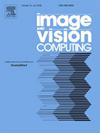Modal-aware contrastive learning for hyperspectral and LiDAR classification
IF 4.2
3区 计算机科学
Q2 COMPUTER SCIENCE, ARTIFICIAL INTELLIGENCE
引用次数: 0
Abstract
Contrastive learning as a self-supervised learning method has received significant attention in the hyperspectral image (HSI) and light detection and ranging (LiDAR) data classification. However, the current contrastive learning-based methods ignore the huge gap between the HSI and LiDAR data in their ability to discriminate ground objects. To fully exploit the potential of HSI in the spectral domain and LiDAR in the spatial domain, we propose a modal-aware contrastive learning (MACL) framework, which learns discriminative multimodal features in both of spatial and spectral domains. First, we design a modal-aligned sample pair construction strategy to ensure that the data structure and characteristics of constructed spectral and spatial sample pairs remain consistent. Then, the spectral and spatial branches based on contrastive learning are adopted to extract multimodal spectral and spatial features in the pre-training stage. Finally, a multimodal attentional feature fusion (MAFF) module is designed to integrate and fuse the multimodal features for the downstream classification task, whose parameters are fine-tuned with a small number of labeled data. Experimental results on three public datasets, i.e., MUUFL, Trento, and Houston2013, demonstrate that our method outperforms several state-of-the-art methods in terms of qualitative and quantitative analysis. Our source codes are available at https://github.com/zlyrs1/MACL.
模态感知对比学习在高光谱和激光雷达分类中的应用
对比学习作为一种自监督学习方法,在高光谱图像(HSI)和光探测与测距(LiDAR)数据分类中受到了广泛的关注。然而,目前基于学习的对比方法忽略了HSI和LiDAR数据在区分地面物体能力方面的巨大差距。为了充分利用光谱域的HSI和空间域的LiDAR的潜力,我们提出了一个模态感知对比学习(MACL)框架,该框架可以学习空间和光谱域的判别多模态特征。首先,我们设计了一种模态对齐的样本对构建策略,以确保构建的光谱样本对和空间样本对的数据结构和特征保持一致。然后,在预训练阶段,采用基于对比学习的谱和空间分支提取多模态谱和空间特征;最后,设计了多模态注意力特征融合(MAFF)模块,对下游分类任务的多模态特征进行整合和融合,并利用少量标记数据对下游分类任务的参数进行微调。在三个公共数据集(即MUUFL, Trento和Houston2013)上的实验结果表明,我们的方法在定性和定量分析方面优于几种最先进的方法。我们的源代码可在https://github.com/zlyrs1/MACL上获得。
本文章由计算机程序翻译,如有差异,请以英文原文为准。
求助全文
约1分钟内获得全文
求助全文
来源期刊

Image and Vision Computing
工程技术-工程:电子与电气
CiteScore
8.50
自引率
8.50%
发文量
143
审稿时长
7.8 months
期刊介绍:
Image and Vision Computing has as a primary aim the provision of an effective medium of interchange for the results of high quality theoretical and applied research fundamental to all aspects of image interpretation and computer vision. The journal publishes work that proposes new image interpretation and computer vision methodology or addresses the application of such methods to real world scenes. It seeks to strengthen a deeper understanding in the discipline by encouraging the quantitative comparison and performance evaluation of the proposed methodology. The coverage includes: image interpretation, scene modelling, object recognition and tracking, shape analysis, monitoring and surveillance, active vision and robotic systems, SLAM, biologically-inspired computer vision, motion analysis, stereo vision, document image understanding, character and handwritten text recognition, face and gesture recognition, biometrics, vision-based human-computer interaction, human activity and behavior understanding, data fusion from multiple sensor inputs, image databases.
 求助内容:
求助内容: 应助结果提醒方式:
应助结果提醒方式:


